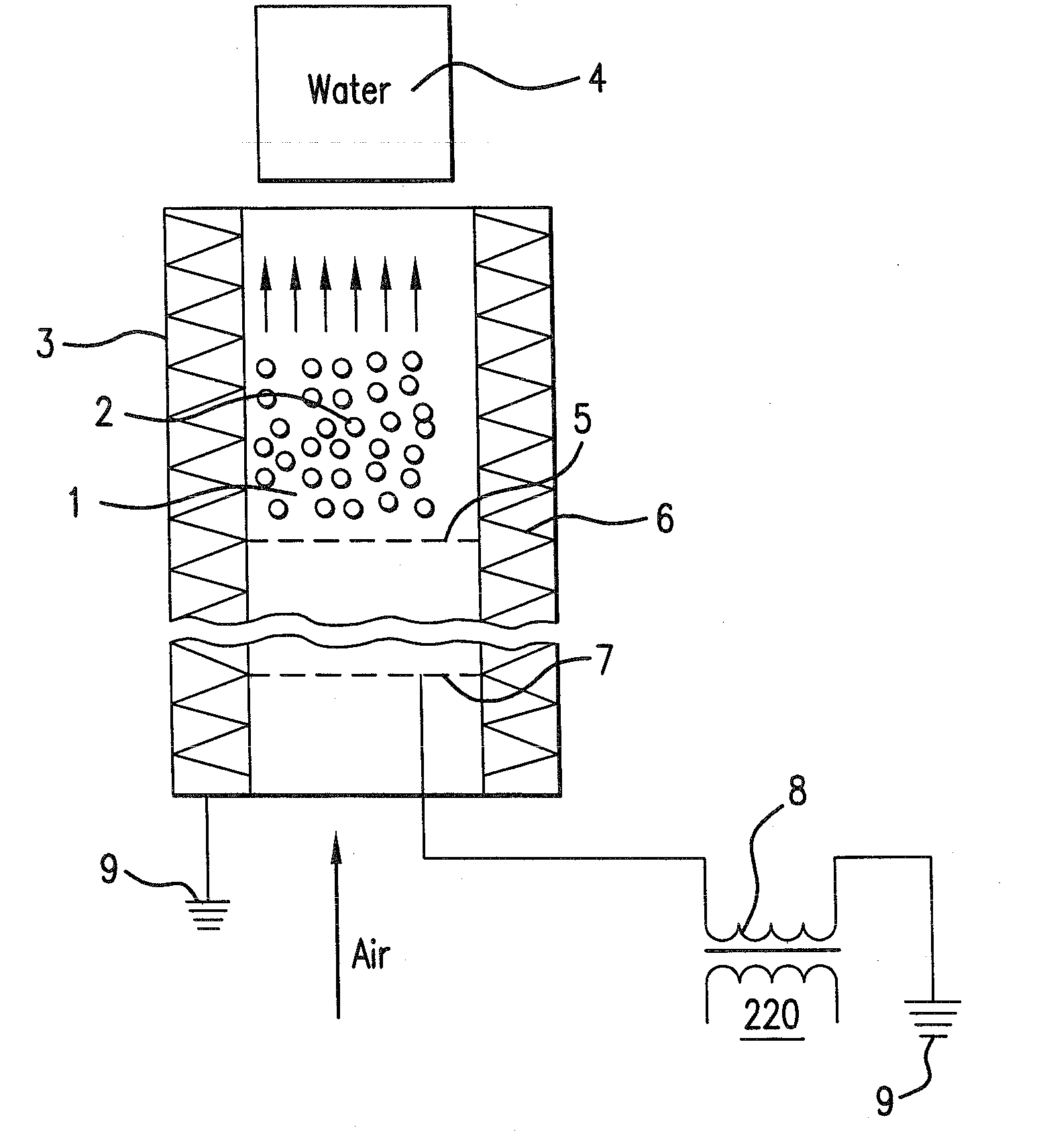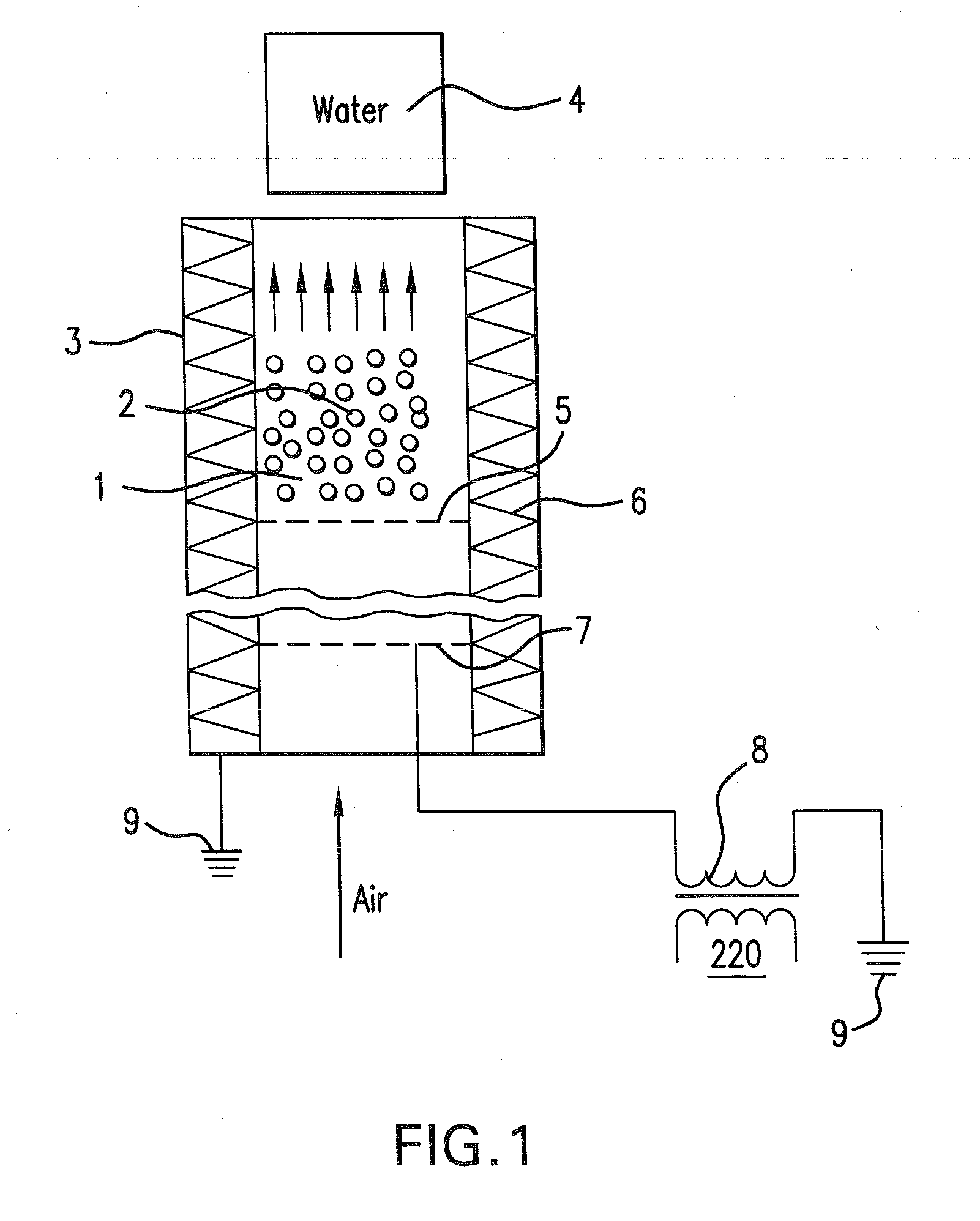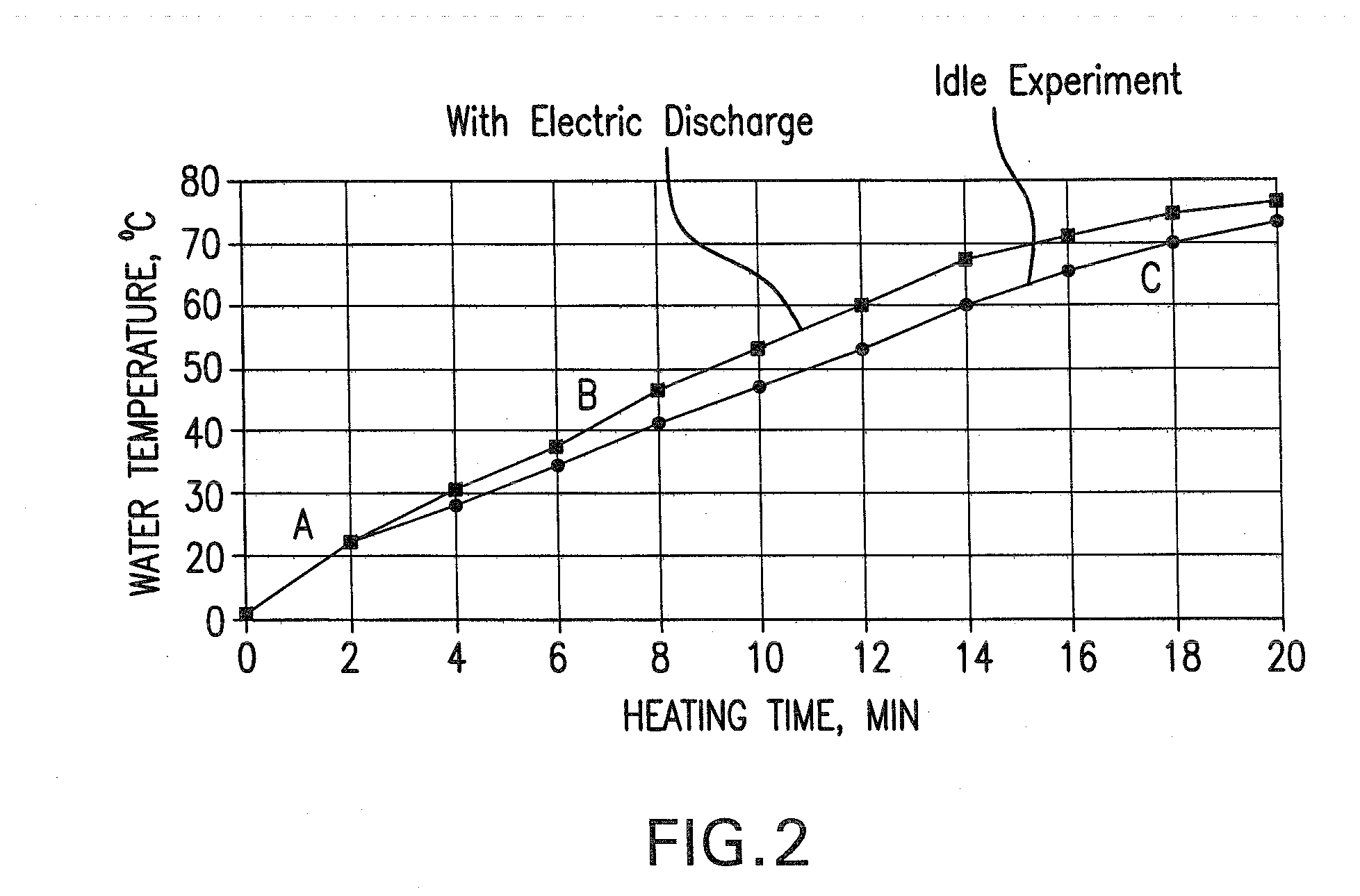Method of solid fuel combustion intensification
a solid fuel combustion and intensification technology, applied in the field of power engineering and metallurgy, can solve the problems of unproductive oxidizer loss, precious oxidizer, and the necessity of obtaining oxidizers using additional complex and metal consuming technologies, and achieve the effects of increasing the rate of oxidation, reducing energy expenditure, and increasing the degree of carbon burning
- Summary
- Abstract
- Description
- Claims
- Application Information
AI Technical Summary
Benefits of technology
Problems solved by technology
Method used
Image
Examples
Embodiment Construction
[0021]The air flow containing pulverized solid fuel comes into the combustion chamber 1. It passes through the grid 7, bottom grate 5, and arrives into the zone 2. Electric ignition 3 provides the ignition temperature of the fuel-air mixture and after that it is switched off. The stationary combustion process is established which is defined by the heating rate of the precisely measured volume of the heat-transfer medium 4 (water in our case). The 5 to 20 kV voltage is supplied from the power supply 8, 9 to the grid 7 coated with the catalyst enhancing the combustion process. This mode is defined by the heating rate of the equal volume of the heat-transfer medium.
[0022]FIG. 2 shows dependence of the water temperature variation from the time when carrying out idle experiment and with the discharge. When coal is combusted with the discharge water heating is accelerated which is evidence of the release of a larger amount of heat as compared to the idle experiment. (On the curves shown t...
PUM
 Login to View More
Login to View More Abstract
Description
Claims
Application Information
 Login to View More
Login to View More - R&D
- Intellectual Property
- Life Sciences
- Materials
- Tech Scout
- Unparalleled Data Quality
- Higher Quality Content
- 60% Fewer Hallucinations
Browse by: Latest US Patents, China's latest patents, Technical Efficacy Thesaurus, Application Domain, Technology Topic, Popular Technical Reports.
© 2025 PatSnap. All rights reserved.Legal|Privacy policy|Modern Slavery Act Transparency Statement|Sitemap|About US| Contact US: help@patsnap.com



